#Invisible energies
Text
"Beyond the Veil: Illuminating 'The Human Aura' by Swami Panchadasi (William Walker Atkinson)"
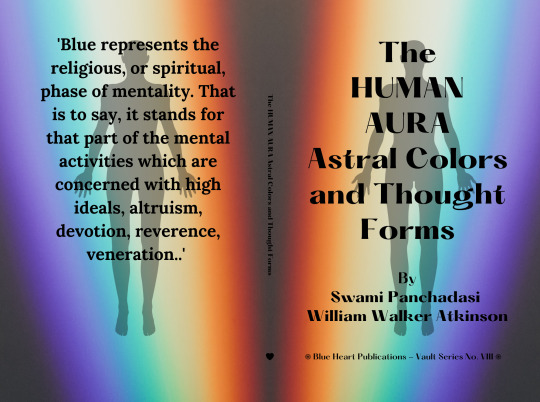
Swami Panchadasi, the pseudonym for the prolific William Walker Atkinson, beckons readers into the ethereal realm of metaphysics and mysticism with his profound work, "The Human Aura: Astral Colors and Thought Forms." This timeless exploration of the invisible energies that surround and emanate from the human body offers a captivating journey into the esoteric dimensions of our existence. The title alone hints at the unveiling of the unseen, promising a rich tapestry of insights into the intricacies of the human aura.
Atkinson's expertise in the realms of mysticism and the occult is evident as he guides readers through the subtle yet profound aspects of the human aura. The aura, believed to be an electromagnetic field that encapsulates the physical body, is described in vivid detail by Panchadasi. The astral colors and thought forms, according to his teachings, provide a visual representation of an individual's emotional, mental, and spiritual state.
The language employed by Panchadasi is both accessible and poetic, allowing readers to grasp the complexities of metaphysical concepts without feeling overwhelmed. The intricacies of astral colors, thought vibrations, and the interplay between the physical and spiritual realms are presented in a manner that invites contemplation and introspection.
One of the notable strengths of "The Human Aura" is its practical approach. Panchadasi not only describes the theory behind the human aura but also provides exercises and techniques for readers to develop their own sensitivity to these subtle energies. The inclusion of practical applications enhances the book's value, allowing readers to engage with the material on a personal level.
The title characterizes the human aura as a dynamic canvas that reflects the inner workings of the mind and spirit. Panchadasi introduces readers to the idea that thoughts and emotions are not mere intangible concepts but possess a tangible existence in the form of vibrant colors within the aura. This perspective encourages individuals to become more attuned to their inner states and, subsequently, take charge of their spiritual and mental well-being.
However, it is essential to approach Panchadasi's work with an open mind, recognizing that the exploration of the aura and thought forms is rooted in esoteric traditions. The book delves into areas that might challenge conventional beliefs, urging readers to broaden their perspectives on the nature of reality and the interconnectedness of the physical and metaphysical realms.
In conclusion, "The Human Aura: Astral Colors and Thought Forms" by Swami Panchadasi, alias William Walker Atkinson, is a captivating odyssey into the unseen dimensions of human existence. The title, with its promise of exploring astral colors and thought forms, encapsulates the essence of the work. Panchadasi's eloquent prose, coupled with practical exercises, invites readers to embark on a personal journey of self-discovery and heightened awareness. As one delves into the pages of this mystical masterpiece, the invisible threads of the human aura are unraveled, revealing a world that transcends the limits of the physical and invites us to contemplate the boundless potential of the human spirit.
"The Human Aura: Astral Colors and Thought Forms." , is available in Amazon in paperback 12.99$ and hardcover 18.99$ editions.
Number of pages: 91
Language: English
Rating: 8/10
Link of the book!
Review By: King's Cat
#Swami Panchadasi#William Walker Atkinson#The Human Aura#Astral Colors#Thought Forms#Metaphysics#Mysticism#Esoteric traditions#Invisible energies#Spiritual exploration#Vibrant colors#Inner states#Astral dimensions#Electromagnetic field#Spiritual well-being#Practical exercises#Introspection#Personal development#Esoteric insights#Metaphysical concepts#Inner workings of the mind#Subtle energies#Dynamic canvas#Spiritual journey#Mind and spirit#Open-minded exploration#Interconnectedness#Unseen dimensions#Transcendental experiences#Spiritual awakening
3 notes
·
View notes
Text
"Beyond the Veil: Illuminating 'The Human Aura' by Swami Panchadasi (William Walker Atkinson)"

Swami Panchadasi, the pseudonym for the prolific William Walker Atkinson, beckons readers into the ethereal realm of metaphysics and mysticism with his profound work, "The Human Aura: Astral Colors and Thought Forms." This timeless exploration of the invisible energies that surround and emanate from the human body offers a captivating journey into the esoteric dimensions of our existence. The title alone hints at the unveiling of the unseen, promising a rich tapestry of insights into the intricacies of the human aura.
Atkinson's expertise in the realms of mysticism and the occult is evident as he guides readers through the subtle yet profound aspects of the human aura. The aura, believed to be an electromagnetic field that encapsulates the physical body, is described in vivid detail by Panchadasi. The astral colors and thought forms, according to his teachings, provide a visual representation of an individual's emotional, mental, and spiritual state.
The language employed by Panchadasi is both accessible and poetic, allowing readers to grasp the complexities of metaphysical concepts without feeling overwhelmed. The intricacies of astral colors, thought vibrations, and the interplay between the physical and spiritual realms are presented in a manner that invites contemplation and introspection.
One of the notable strengths of "The Human Aura" is its practical approach. Panchadasi not only describes the theory behind the human aura but also provides exercises and techniques for readers to develop their own sensitivity to these subtle energies. The inclusion of practical applications enhances the book's value, allowing readers to engage with the material on a personal level.
The title characterizes the human aura as a dynamic canvas that reflects the inner workings of the mind and spirit. Panchadasi introduces readers to the idea that thoughts and emotions are not mere intangible concepts but possess a tangible existence in the form of vibrant colors within the aura. This perspective encourages individuals to become more attuned to their inner states and, subsequently, take charge of their spiritual and mental well-being.
However, it is essential to approach Panchadasi's work with an open mind, recognizing that the exploration of the aura and thought forms is rooted in esoteric traditions. The book delves into areas that might challenge conventional beliefs, urging readers to broaden their perspectives on the nature of reality and the interconnectedness of the physical and metaphysical realms.
In conclusion, "The Human Aura: Astral Colors and Thought Forms" by Swami Panchadasi, alias William Walker Atkinson, is a captivating odyssey into the unseen dimensions of human existence. The title, with its promise of exploring astral colors and thought forms, encapsulates the essence of the work. Panchadasi's eloquent prose, coupled with practical exercises, invites readers to embark on a personal journey of self-discovery and heightened awareness. As one delves into the pages of this mystical masterpiece, the invisible threads of the human aura are unraveled, revealing a world that transcends the limits of the physical and invites us to contemplate the boundless potential of the human spirit.
"The Human Aura: Astral Colors and Thought Forms." , is available in Amazon in paperback 12.99$ and hardcover 18.99$ editions.
Number of pages: 91
Language: English
Rating: 8/10
Link of the book!
Review By: King's Cat
#Swami Panchadasi#William Walker Atkinson#The Human Aura#Astral Colors#Thought Forms#Metaphysics#Mysticism#Esoteric traditions#Invisible energies#Spiritual exploration#Vibrant colors#Inner states#Astral dimensions#Electromagnetic field#Spiritual well-being#Practical exercises#Introspection#Personal development#Esoteric insights#Metaphysical concepts#Inner workings of the mind#Subtle energies#Dynamic canvas#Spiritual journey#Mind and spirit#Open-minded exploration#Interconnectedness#Unseen dimensions#Transcendental experiences#Spiritual awakening
0 notes
Text

#this
#chronic illness#chronically ill#chroniclesofchronicillness#chronic pain#invisible illness#invisible disability#spoonie#mental health#pots#svt#no energy
2K notes
·
View notes
Text

A recent illustration I made to submit to a show about disability
I wanted to depict pain and work. It wasn't selected, but I still wanted to share for any who relate 💕
#my art#disability#chronic pain#chronically ill#disabled artist#auto immune disorder#invisible disability#disability art#chronically ill artist#illustration#artists on tumblr#original art#I wanted to depict the stress of being chronically ill in productivity culture#called 'gotta clock in'#everything is fine energy#fire tw#body horror tw /
1K notes
·
View notes
Text
Deb Chachra's "How Infrastructure Works": Mutual aid, the built environment, the climate, and a future of comfort and abundance
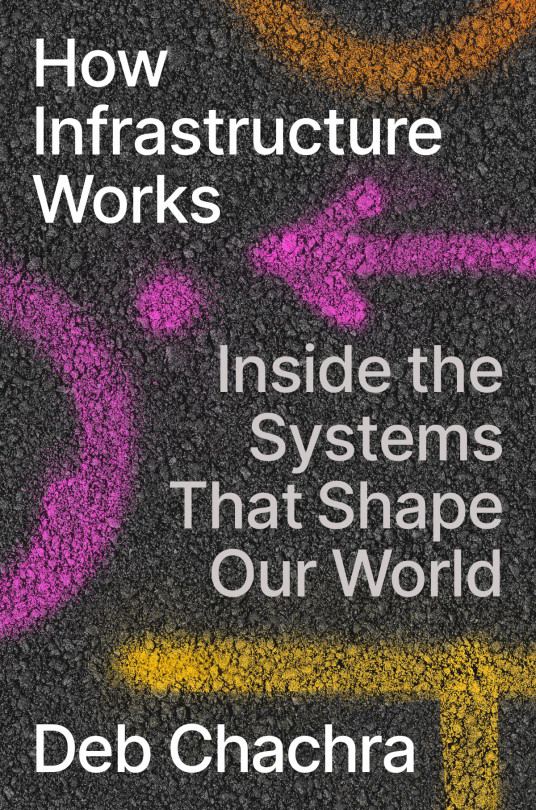
This Thursday (Oct 19), I'm in Charleston, WV to give the 41st annual McCreight Lecture in the Humanities. And on Friday (Oct 20), I'm at Charleston's Taylor Books from 12h-14h.

Engineering professor and materials scientist Deb Chachra's new book How Infrastructure Works is a hopeful, lyrical – even beautiful – hymn to the systems of mutual aid we embed in our material world, from sewers to roads to the power grid. It's a book that will make you see the world in a different way – forever:
https://www.penguinrandomhouse.com/books/612711/how-infrastructure-works-by-deb-chachra/
Chachra structures the book as a kind of travelogue, in which she visits power plants, sewers, water treatment plants and other "charismatic megaprojects," connecting these to science, history, and her own memoir. In so doing, she doesn't merely surface the normally invisible stuff that sustains us all, but also surfaces its normally invisible meaning.
Infrastructure isn't merely a way to deliver life's necessities – mobility, energy, sanitation, water, and so on – it's a shared way of delivering those necessities. It's not just that economies of scale and network effects don't merely make it more efficient and cheaper to provide these necessities to whole populations. It's also that the lack of these network and scale effects make it unimaginable that these necessities could be provided to all of us without being part of a collective, public project.
Think of the automobile versus public transit: if you want to live in a big, built up city, you need public transit. Once a city gets big enough, putting everyone who needs to go everywhere in a car becomes a Red Queen's Race. With that many cars on the road, you need more roads. More roads push everything farther apart. Once everything is farther apart, you need more cars.
Geometry hates cars. You can't bargain with geometry. You can't tunnel your way out of this. You can't solve it with VTOL sky-taxis. You can't fix it with self-driving cars whose car-to-car comms let them shave down their following distances. You need buses, subways and trams. You need transit. There's a reason that every plan to "disrupt" transportation ends up reinventing the bus:
https://stanforddaily.com/2018/04/09/when-silicon-valley-accidentally-reinvents-the-city-bus/
Even the cities we think of as motorists' paradises – such as LA – have vast, extensive transit systems. They suck – because they are designed for poor people – but without them, the city would go from traffic-blighted to traffic-destroyed.
The dream of declaring independence from society, of going "off-grid," of rejecting any system of mutual obligation and reliance isn't merely an infantile fantasy – it also doesn't scale, which is ironic, given how scale-obsessed its foremost proponents are in their other passions. Replicating sanitation, water, rubbish disposal, etc to create individual systems is wildly inefficient. Creating per-person communications systems makes no sense – by definition, communications involves at least two people.
So infrastructure, Chachra reminds us, is a form of mutual aid. It's a gift we give to ourselves, to each other, and to the people who come after us. Any rugged individualism is but a thin raft, floating on an ocean of mutual obligation, mutual aid, care and maintenance.
Infrastructure is vital and difficult. Its amortization schedule is so long that in most cases, it won't pay for itself until long after the politicians who shepherded it into being are out of office (or dead). Its duty cycle is so long that it can be easy to forget it even exists – especially since the only time most of us notice infrastructure is when it stops working.
This makes infrastructure precarious even at the best of times – hard to commit to, easy to neglect. But throw in the climate emergency and it all gets pretty gnarly. Whatever operating parameters we've designed into our infra, whatever maintenance regimes we've committed to for it, it's totally inadequate. We're living through a period where abnormal is normal, where hundred year storms come every six months, where the heat and cold and wet and dry are all off the charts.
It's not just that the climate emergency is straining our existing infrastructure – Chachra makes the obvious and important point that any answer to the climate emergency means building a lot of new infrastructure. We're going to need new systems for power, transportation, telecoms, water delivery, sanitation, health delivery, and emergency response. Lots of emergency response.
Chachra points out here that the history of big, transformative infra projects is…complicated. Yes, Bazalgette's London sewers were a breathtaking achievement (though they could have done a better job separating sewage from storm runoff), but the money to build them, and all the other megaprojects of Victorian England, came from looting India. Chachra's family is from India, though she was raised in my hometown of Toronto, and spent a lot of her childhood traveling to see family in Bhopal, and she has a keen appreciation of the way that those old timey Victorian engineers externalized their costs on brown people half a world away.
But if we can figure out how to deliver climate-ready infra, the possibilities are wild – and beautiful. Take energy: we've all heard that Americans use far more energy than most of their foreign cousins (Canadians and Norwegians are even more energy-hungry, thanks to their heating bills).
The idea of providing every person on Earth with the energy abundance of an average Canadian is a horrifying prospect – provided that your energy generation is coupled to your carbon emissions. But there are lots of renewable sources of energy. For every single person on Earth to enjoy the same energy diet as a Canadian, we would have to capture a whopping four tenths of a percent of the solar radiation that reaches the Earth. Four tenths of a percent!
Of course, making solar – and wind, tidal, and geothermal – work will require a lot of stuff. We'll need panels and windmills and turbines to catch the energy, batteries to store it, and wires to transmit it. The material bill for all of this is astounding, and if all that material is to come out of the ground, it'll mean despoiling the environments and destroying the lives of the people who live near those extraction sites. Those are, of course and inevitably, poor and/or brown people.
But all those materials? They're also infra problems. We've spent millennia treating energy as scarce, despite the fact that fresh supplies of it arrive on Earth with every sunrise and every moonrise. Moreover, we've spent that same period treating materials as infinite despite the fact that we've got precisely one Earth's worth of stuff, and fresh supplies arrive sporadically, unpredictably, and in tiny quantities that usually burn up before they reach the ground.
Chachra proposes that we could – we must – treat material as scarce, and that one way to do this is to recognize that energy is not. We can trade energy for material, opting for more energy intensive manufacturing processes that make materials easier to recover when the good reaches its end of life. We can also opt for energy intensive material recovery processes. If we put our focus on designing objects that decompose gracefully back into the material stream, we can build the energy infrastructure to make energy truly abundant and truly clean.
This is a bold engineering vision, one that fuses Chachra's material science background, her work as an engineering educator, her activism as an anti-colonialist and feminist. The way she lays it out is just…breathtaking. Here, read an essay of hers that prefigures this book:
https://tinyletter.com/metafoundry/letters/metafoundry-75-resilience-abundance-decentralization
How Infrastructure Works is a worthy addition to the popular engineering books that have grappled with the climate emergency. The granddaddy of these is the late David MacKay's open access, brilliant, essential, Sustainable Energy Without the Hot Air, a book that will forever change the way you think about energy:
https://memex.craphound.com/2009/04/08/sustainable-energy-without-the-hot-air-the-freakonomics-of-conservation-climate-and-energy/
The whole "Without the Hot Air" series is totally radical, brilliant, and beautiful. Start with the Sustainable Materials companion volume to understand why everything can be explained by studying, thinking about and changing the way we use concrete and aluminum:
https://memex.craphound.com/2011/11/17/sustainable-materials-indispensable-impartial-popular-engineering-book-on-the-future-of-our-built-and-made-world/
And then get much closer to home – your kitchen, to be precise – with the Food and Climate Change volume:
https://pluralistic.net/2021/01/06/methane-diet/#3kg-per-day
Reading Chachra's book, I kept thinking about Saul Griffith's amazing Electrify, a shovel-ready book about how we can effect the transition to a fully electrified America:
https://pluralistic.net/2021/12/09/practical-visionary/#popular-engineering
Chachra's How Infrastructure Works makes a great companion volume to Electrify, a kind of inspirational march to play accompaniment on Griffith's nuts-and-bolts journey. It's a lyrical, visionary book, charting a bold course through the climate emergency, to a world of care, maintenance, comfort and abundance.

If you'd like an essay-formatted version of this post to read or share, here's a link to it on pluralistic.net, my surveillance-free, ad-free, tracker-free blog:
https://pluralistic.net/2023/10/17/care-work/#charismatic-megaprojects


My next novel is The Lost Cause, a hopeful novel of the climate emergency. Amazon won't sell the audiobook, so I made my own and I'm pre-selling it on Kickstarter!
#pluralistic#books#reviews#deb chachra#debcha#engineering#infrastructure#free energy#material science#abundance#scarcity#mutual aid#maintenance#99 percent invisible#colonialism#gift guide
259 notes
·
View notes
Text
The poetry of Annalise being a fairborn having decimation and Gabriel being a blood and having alchemy is brilliant. Gabriel creates and she destroys, fundamentally dissimilar to their supposed inherent natures'. Nathan is destruction and creation together, using death to become something new. Without any one of them they'd be imbalanced but together they're more than the sum of each other's parts
#tbsatdh#the bastard son and the devil himself#the bastard son & the devil himself#nabrielise#annalise having invisibility would have detracted so much from the show#she's a walking demonstration of the hypocrisy of the fairborns#screaming#like i love them so much#but also they all kinda have wet cat/dog energy#damp and miserable and needing a hug and a blanket
1K notes
·
View notes
Text




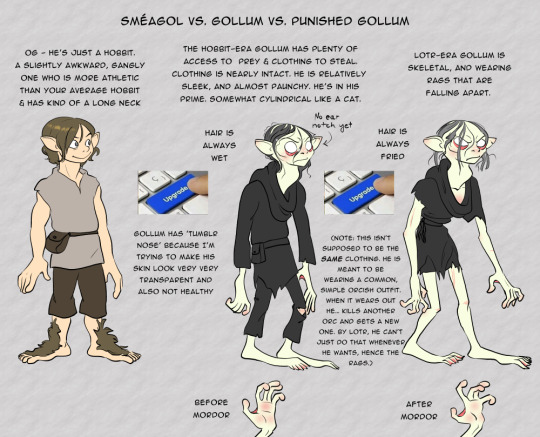
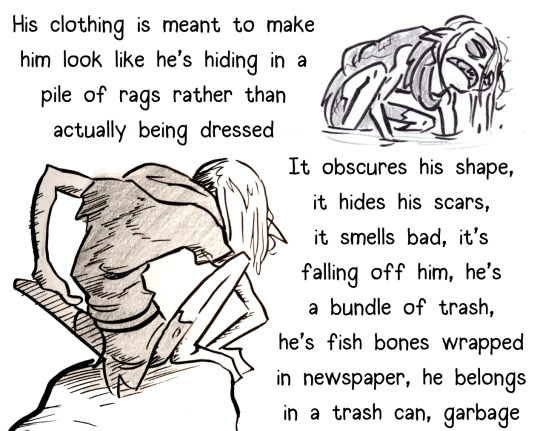

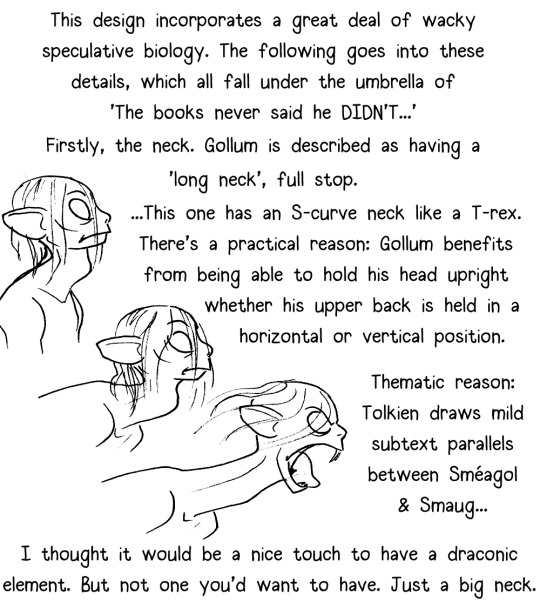



I feel weird giving out unprompted permission statements because I'm making a big assumption that anyone's going to want to use my work. That said I also know people do like to build on other people's art and can't always work up the nerve to ask, so: Anyone is free to use this design if they want to for any reason- I don't own this character anyway. (Although I am hopeful that you do not, you know, monetize it, because i cant do that and if you do that its not fair ;_; ) Feel free to remix, improve, use as basic inspiration, etc. I would appreciate a tag/mention if you use it so I can see what you did!
This design has evolved a little since I first started drawing it, and I will see people reblogging the original design notes and think 'oh no! those are out of date and I don't have new/accurate ones!'
Reblogging the old one is still an honor- and the first take on a design just sometimes has a different appeal because it's less refined and more chaotic (especially with a character that should be chaotic), so I suspect some people will just prefer the older drawings & they'll still get shared, which is great! But I felt as if the project was a little bit incomplete without an update, since I think I've reached the point where if you see that old post & then come to my blog and look at my current content, there's a noticeable difference.
Also I kind of like making design notes.
If anyone's wondering why things changed, the answer's really simple- 90% of it is just the result of him settling into having more consistent anatomy and facial structure so that I can keep him looking accurate across different angles and poses. If you look at the old drawings you may notice that Gollum has an inconsistently shaped squishy head. That's fine for a concept post but doesn't work as well for maintaining him across different comic panels or in an animatic, at least not the way I work.
In the same vein, while my art is still & will always be heavily stylized, I started giving him more structured semi-sorta-realistic anatomy so that he wouldn't look entirely out of place next to less bizarre-looking characters such as Aragorn. (I feel that's also helpful in nudging Gollum into the uncanny valley where he ought to be, rather than leaving him so abstractified that there's a risk you won't see anything wrong with him having noodle arms.)
He also acquired the new-style 'garbage bag' outfit because I found a reference in LOTR to his arms and legs being bare/exposed (it's in one of my favorite passages, the 'an eagle would think Gollum was dead if it came by right now' passage in The Two Towers):
Not even an eagle poised against the sun would have marked the hobbits sitting there, under the weight of doom, silent, not moving, shrouded in their thin grey cloaks. For a moment he might have paused to consider Gollum, a tiny figure sprawling on the ground: there perhaps lay the famished skeleton of some child of Men, its ragged garment still clinging to it, its long arms and legs almost bone-white and bone-thin: no flesh worth a peck.
#long post#blobart#lotr#lotr gollum#lotr fan redesign#i really do love that passage because it says so much and implies more#sam and frodo are sitting there invisible because they are being protected by the gift of love and honor galadriel gave them#gollum who has been busting his butt to hide all of his life#issplatted out there like a frog entirely exposed. he has nowhere to hide and no protection- not even proper clothing#and even a carrion bird would think he was 1) dead 2) of no value#...and then we have tolkien drawing the allusion to a starved/abandoned child#it's eerie and deeply empathetic at the same time#It's also funny. why would there be an eagle here pondering gollum#same energy as 'a fox wondered why these hobbits were bobbling around in the woods' and then the fox disappears forever#also same energy as 'there was a thrush nearby. bilbo was in such a bad mood that he tried to kill it'#body horror#eye horror#unsanitary/#bones?....#tw: gollum#there#I will be doing a morning reblog of this because i only do this once every two years so postblock it if once was enough
318 notes
·
View notes
Text

more legion posting
#my art#legion of superheroes#brainiac 5#invisible kid#shrinking violet#andromeda#lightning lad#cosmic boy#bouncing boy#lyle norg x querl dox#dc let me write legion i will write the funniest love triangle between lyle querl and laurel#i think its hilarious brainy's got andromeda fucking biting at the bars of her enclosure like girl you're so valid#i also think the garth/irma/rokk love triangle is great but we could go even harder#the ideal legion energy is where they have college dorm levels of drama
233 notes
·
View notes
Text
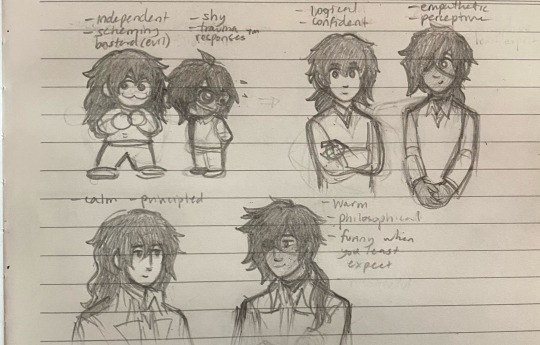
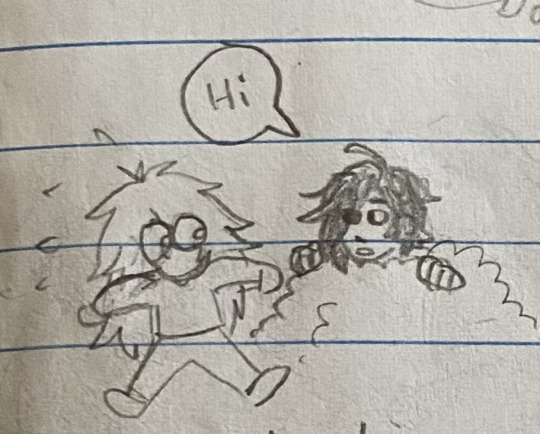
Personality development headcanons
#ragbros#I think diluc as a kid was one of those extroverted introverts with a heck ton of energy but none of it went to socializing#whereas kaeya was extremely closed off and reserved#who tried his hardest to make himself invisible or useful to someone to justify his existence#also kid kaeya can and will psychoanalyze every person he comes across#to a scarily accurate degree#meanwhile diluc is like social skills what’s that#(he was always off in his own world studying exploring#or causing havoc when he really wanted attention lol)#then as they get older diluc becomes more grounded in reality thanks to knightly and older sibling responsibilities#kaeya becomes less crushed by the weight of his reality and lets himself lighten up and enjoy the company of the people he loves#idk just some off the cuff thoughts#I am trying to capture their Vibes#I would love to read other people’s thoughts on this topic!!
55 notes
·
View notes
Text
Highly underrated Rammstein live video! 🔥 Why only 130 likes?? The quality is amazing and some props are kinda untraditional when you think about who's using them...+ That energetic audience is amazing❤
youtube
#yeah yeah tills coat is on fire but ollie wears the same head gear as THE INVISIBLE MAN#and even Flake gets a fire-hand prop WHILE he is dancing#oh and the audience?...their mega energy!?!?!? Yeah I LOVE that!#why I had I never discovered this yt user before??#only 130 likes!?!? are you KIDDING me!?!?#rammstein live#rammstein#rammstein 00s#Youtube
26 notes
·
View notes
Text
the fact that. that claudia’s words are….so carefully chosen as the episode goes on. she’s telling a story for herself, she may be writing from an honest place but you can tell that she’s wording her experiences with such fascination and detachment, how even though she writes every day you can see the discrepancies between her words and the emotions that we get to witness as the audience. the fact that she’s talking about just getting started and trying to rewrite/recontextualize the trauma she just went through by writing those words. the fact that she’s saying them with that same fascinated detachment over a scene of being in such intense emotional pain that she’s burning her arm in the sun…..
#the! odyssey! of! recollection!!!!!!!!!!#god….she……….#I’m in pain.#she’s so fascinating….gotta rewatch…#also idk about you guys but the experience of being young and feeling the urge to editorialize/narratively present your own experiences#in a diary as though it’s a story that you’re presenting to some invisible audience???? pure 14 year old/teen energy to me…..like………#like……god. the odyssey of recollection……..memory is a monster……and she is conquering it…#claudia de pointe du lac#iwtv spoilers#interview with the vampire#iwtv#m watches iwtv
456 notes
·
View notes
Text
"Physicists have long theorized that our universe may not be limited to what we can see. By observing gravitational forces on other galaxies, they've hypothesized the existence of "dark matter," which would be invisible to conventional forms of observation.
Pran Nath, the Matthews Distinguished University Professor of physics at Northeastern University, says that "95% of the universe is dark, is invisible to the eye."
"However, we know that the dark universe is there by [its] gravitational pull on stars," he says. Other than its gravity, dark matter has never seemed to have much effect on the visible universe.
Yet the relationship between these visible and invisible domains, especially as the universe first formed, has remained an open question.
Now, Nath says there is mounting evidence that these two supposedly distinct realms actually co-evolved."
""The question is, what's the influence of the hidden sector on the visible sector?" Nath asks. "But what do we care? We can explain everything."
But we can't explain everything, Nath contends. There are anomalies that don't seem to fit the so-called "Standard Model" of the universe."
continue reading
#astronomy#physics#universe#space#origin of the universe#evolution#science#research#energy#visible spectrum#invisible universe#magnetism#electromagnetism#electric universe#dark matter#visible universe#cosmology
21 notes
·
View notes
Text
There’s like 0 other lesbians at school hope this changes at uni 🙏
#hmm i mean TECHNICALLY there is a sapphic person? I am unsure#idk all she talks abt are guys tho im unsure#im keeping my expectations low at uni i think i will continue to be an invisible token lesbian everywhere i go#and thats like#ok i gues#more like used to it#mochats#im so passionate abt lesbian content here bc my energy and brainrot doesnt go anywhere else outside of tumblr n sometimes discord#irl i pretend to be a good christian girl and everyone thinks i am
29 notes
·
View notes
Text
Promised Tasks and Low Energy Days
Low-energy days suck for a lot of reasons.
They don't feel good. There's this bone-crushing exhaustion where even the simple act of getting out of bed feels like a mountainous hurdle.
Thinking is hard.
You typically have a pile of things you need to do. Vacuuming. Gardening. Work. Dishes. Eating.
But the worst part is when you really, really want to do some of those things and you just can't. The problem becomes compounded when you have multiple low-energy days in a row. It's frustrating and demoralizing.
I try to remind myself of the small victories. I made breakfast. I scheduled one appointment. I got those screenshots I promised to take. They're not the most important things I needed to do. But they are what I had the energy for and now I don't need to do them.
Most importantly, I did my promised task.
Back when I first got sick, I made a promise to myself. No matter how bad I felt or how little energy I had, I'd always get dressed. It didn't matter if I immediately crawled back into bed and did literally nothing else that day. So long as I get dressed my day is a success.
#chronically ill#low energy#low spoons#disabled#invisible disability#chronic illness#chronic fatigue#promised tasks#gods I'm so tired
69 notes
·
View notes
Text

😂
#chronic illness#chronically ill#chroniclesofchronicillness#chronic pain#invisible illness#invisible disability#spoonie#mental health#pots#svt#trigeminal neuralgia#no energy
42 notes
·
View notes
Text
having chronic pain and PTSD is like
-> in pain -> anxious that something bad is going to happen while i'm in too much pain to do anything about it -> anxiety increases -> anxiety makes pain worse -> anxious that something bad is going to happen while i'm in too much pain to do anything about it -> anxiety increases -> anxiety makes pain worse -> anxious that something bad is going to happen while—
#ptsd recovery#chronic pain#fibromyalgia#fibro problems#disabled#invisible disability#this shit is wack#i have so much to do but so little energy#being in pain all the time is a full time job that i don't get paid for and also i am my own HR department
12 notes
·
View notes